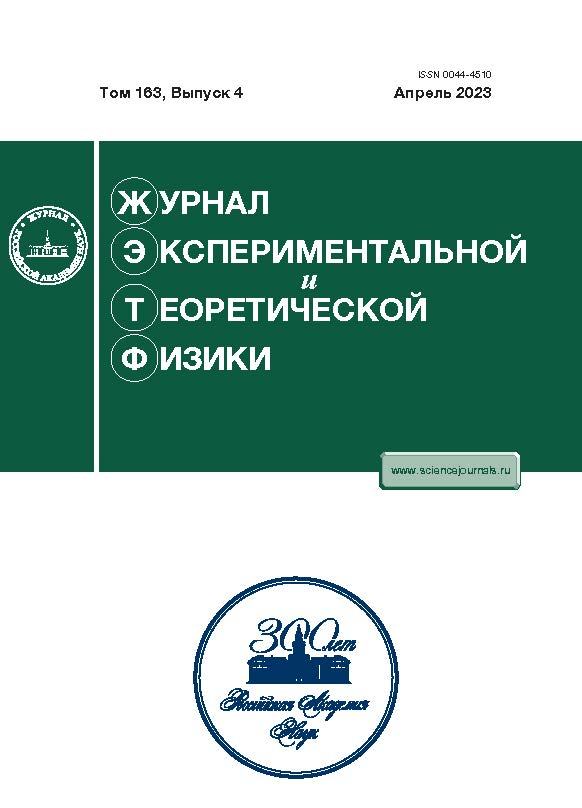Molecular Dynamics Investigation of the Effect of the Interface Orientation on the Intensity of Titanium Dissolution in Crystalline and Amorphous Aluminum
- Autores: Poletaev G.M1, Bebikhov Y.V2, Semenov A.S2, Sitnikov A.A1
-
Afiliações:
- Polzunov Altai State Technical University
- Mirny Polytechnic Institute, Ammosov North-Eastern Federal University
- Edição: Volume 163, Nº 4 (2023)
- Páginas: 537-544
- Seção: Articles
- URL: https://rjpbr.com/0044-4510/article/view/653533
- DOI: https://doi.org/10.31857/S0044451023040119
- EDN: https://elibrary.ru/MCEOSD
- ID: 653533
Citar
Texto integral
Resumo
The influence of the interface orientation on the intensity of dissolution of titanium in crystalline and amorphous aluminum is studied by molecular dynamics simulation. The following four orientations of the Ti–Al interface with respect to the Ti (hcp) and Al (fcc) lattices are considered: (1) (0001):(111), (2) (0001):(001), (3) (101¯0101¯0):(111), and (4) (101¯1101¯1):(001). The interface orientation is found to influence the intensity of dissolution of titanium in aluminum, which increases for the accepted designations in the order 1–2–3–4. An important phenomenon in this case turns out to be the formation of a thin (2–3 atomic planes thick) crystalline layer in aluminum, which repeats the crystal lattice of titanium, at the initial stage of dissolution. At a temperature below the melting point of aluminum, a grain boundary parallel to the interface forms behind this layer. At temperatures above the melting point of aluminum, this crystalline layer is preserved, but its thickness decreases gradually as the temperature increases. For aluminum in an amorphous state at temperatures below its melting point, the dissolution of titanium occurs at almost the same intensity as in the crystalline state of aluminum, which is explained by the formation of a similar crystalline layer in aluminum at the interface in all cases.
Sobre autores
G. Poletaev
Polzunov Altai State Technical University
Email: gmpoletaev@mail.ru
656038, Barnaul, Russia
Yu. Bebikhov
Mirny Polytechnic Institute, Ammosov North-Eastern Federal University
Email: gmpoletaev@mail.ru
678170, Mirny, Russia
A. Semenov
Mirny Polytechnic Institute, Ammosov North-Eastern Federal University
Email: gmpoletaev@mail.ru
678170, Mirny, Russia
A. Sitnikov
Polzunov Altai State Technical University
Autor responsável pela correspondência
Email: gmpoletaev@mail.ru
656038, Barnaul, Russia
Bibliografia
- Y.-W. Kim, J. Metals 46, 30 (1994).
- F. Appel, P. A. Beaven, and R. Wagner, Acta metall. mater. 41, 1721 (1993).
- J. Lapin, Proc. Metal, Tanger, Ostrava 19, 2019 (2009).
- T. Tetsui, Rare Metals 30, 294 (2011).
- T. Voisin, J.-P. Monchoux, and A. Couret, in Spark Plasma Sintering of Materials, ed. by P. Cavaliere, Springer, Cham (2019), p. 713.
- Q. Wu, J. Wang, Y. Gu, Y. Guo, G. Xu, and Y. Cui, J. Phase Equilib. Di us. 39, 724 (2018).
- N. Thiyaneshwaran, K. Sivaprasad, and B. Ravisankar, Sci. Rep. 8, 16797 (2018).
- H. Wu, Sh. Zhang, H. Hu, J. Li, J. Wu, Q. Li, and Zh. Wang, Intermetallics 110, 106483 (2019).
- J.-G. Luo, Welding J. 79, 239-s (2000).
- Г. М. Полетаев, ЖЭТФ 160, 527 (2021).
- Г. М. Полетаев, Р. Ю. Ракитин, ФТТ 64, 412 (2022).
- V. V. Boldyrev, K. Tkacova, J. Mater. Synt. Proc. 8, 121 (2000).
- V. Y. Filimonov, M. V. Loginova, S. G. Ivanov, A. A. Sitnikov, V. I. Yakovlev, A. V. Sobachkin, A. Z. Negodyaev, and A. Y. Myasnikov, Comb. Sci. Techn. 192, 457 (2020).
- M. V. Loginova, V. I. Yakovlev, V. Yu. Filimonov, A. A. Sitnikov, A. V. Sobachkin, S. G. Ivanov, and A. V. Gradoboev, Lett. Mater. 8, 129 (2018).
- R. R. Zope and Y. Mishin, Phys. Rev. B 68, 024102 (2003).
- Y.-K. Kim, H.-K. Kim, W.-S. Jung, and B.-J. Lee, Comput. Mater. Sci. 119, 1 (2016).
- Q.-X. Pei, M. H. Jhon, S. S. Quek, and Z. Wu, Comput. Mater. Sci. 188, 110239 (2021).
- C. Chen, F. Zhang, H. Xu, Z. Yang, and G. M. Poletaev, J. Mater. Sci. 57, 1833 (2022).
- Г. М. Полетаев, И. В. Зоря, ЖЭТФ 158, 485 (2020).
- Q. Bizot, O. Politano, A. A. Nepapushev, S. G. Vadchenko, A. S. Rogachev, and F. Baras, J. Appl. Phys. 127, 145304 (2020).
- M. I. Mendelev, F. Zhang, H. Song, Y. Sun, C. Z. Wang, and K. M. Ho, J. Chem. Phys. 148, 214705 (2018).
- H. Y. Zhang, F. Liu, Y. Yang, and D. Y. Sun, Sci. Rep. 7, 10241 (2017).
- M. I. Mendelev, M. J. Rahman, J. J. Hoyt, and M. Asta, Modell. Simul. Mater. Sci. Eng. 18, 074002 (2010).
- D. Y. Sun, M. Asta, and J. J. Hoyt, Phys. Rev. B. 69, 024108 (2004).
Arquivos suplementares










